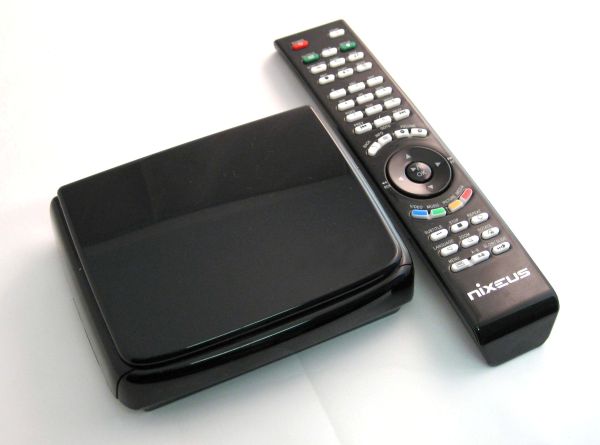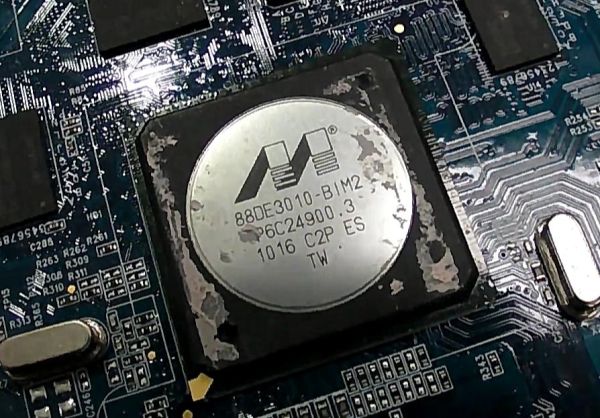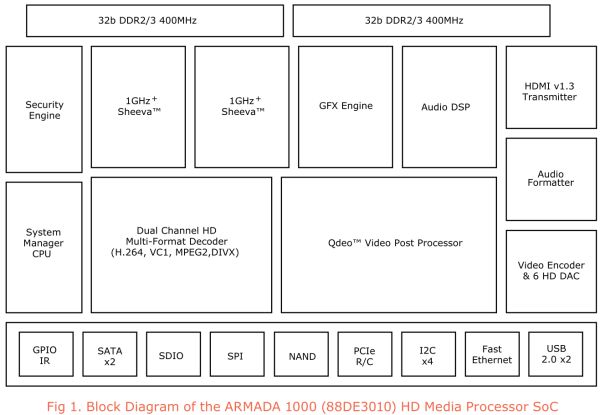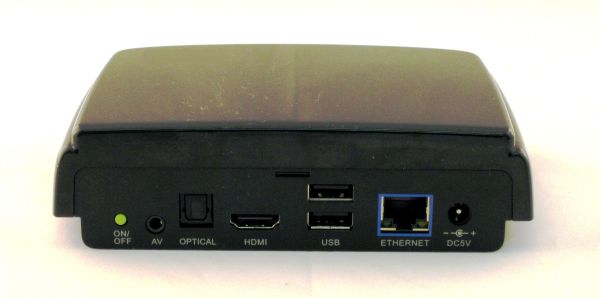
Original Link: https://www.anandtech.com/show/4214/nixeus-fusion-xs-brings-marvell-into-the-dma-market
Nixeus Fusion XS Brings Marvell into the DMA Market
by Ganesh T S on March 11, 2011 8:54 PM EST- Posted in
- Marvell
- Home Theater
- Media Streamer
- Android
- Nixeus
The DMA (Digital Media Adapter) aka media streamer market has been dominated by Sigma Designs, Realtek and of late, the Intel CE 4xxx series. The low end market is catered to by the Boxchip and Amlogic based media streamers.
Having got the codec compatibility right (at least on paper), the choice for the media streamer manufacturers was to either go the 3D route or add extra non-core functionality in the next-gen products. 3D is yet to go mainstream despite the best efforts of the top tier manufacturers.
A number of Android-based DMAs (Digital Media Adapters / media streamers) are set to launch in 2011.
It appears that Android is very resource intensive for the current media streamer platforms. We are yet to see any products announced with the Realtek 1185. However, it has been demonstrated on the TViX Xroid A1 which uses the SMP8656 from Sigma Designs. Today, we will cover the launch of another Android based media player from Nixeus, the Nixeus Fusion XS.
Nixeus got off to a promising start with the Nixeus Fusion HD. However, the lack of CPU and graphics muscle in the SMP 8655 (and the fact that they jumped on the 8655 bandwagon a bit late compared to other vendors such as WD) meant that the Fusion HD could only differentiate itself to a limited extent.
Instead of going with Sigma Designs, Nixeus decided that a fresh approach was necessary for their next-gen product and opted to go with Marvell, an hitherto unproven vendor in this market space. Before going into the details of the SoC itself, let us take a brief look at the Nixeus Fusion XS specifications.
Engineering Sample of the Nixeus Fusion XS
General characteristics:
- HDMI 1.3a DLNA 1.5 media player
- 10 / 100 Mbps Ethernet
- Optical SPDIF
- Composite output (with stereo audio)
- 2 x USB 2.0 host
- IR remote controller
Hardware specifications:
- Marvell 88DE3010
- 2 GB NAND Flash
- 512 MB DRAM ( 4 x 1Gb x16 DDR2)
Software specifications:
- Android 2.2 based application system
- Web browser with HTML5 support
- Streaming protocols supported: HTTP/MMS/RTP/RTSP/UDP
- Full DVD playback support (with menus)
- Blu-Ray menu support (no BD-Java / BD-Live)
- Codec support specified to be the same as that of the Fusion HD along with Real Media
Currently, there is no single media streamer capable of catering to all the requirements of all the consumers. Though the above set of specifications are nothing out of the ordinary, Nixeus may still have a winner in its hands if it manages to placate the demanding consumers. Thankfully, there is a much more powerful SoC at their disposal this time around.
The Marvell 88DE3010 is part of the ARMADA 1000 lineup, which we had covered briefly in an earlier piece.
This chip is targeted towards Blu-Ray players, TVs and Set Top Boxes. The two PJ1 Sheeva cores (Marvell's custom ARMv5 architecture) can run upto 1.2 GHz, but they are clocked at 900 MHz in the 88DE3010. The TDP of the processor is 5W. A complete set of peripherals is also included.
The video decoder in the 88DE3010 supports simultaneous decoding of two HD streams in MPEG-2, H.264 (AVC), VC-1, MPEG4 (DivX), VP6 SD and WMV9 formats. Audio decoding in the 88DE3010 is carried out on a dedicated audio DSP core, and support is provided for decoding of the popular audio formats (including Dolby, DTS, MP3, AAC, eAAC+, etc) along with audio post processing.
All applications and the OS are run on one of the Sheeva processors. This application processor is dedicated to applications only and is not utilized for AV decoding or security functions. Elements like Digital Rights Management (DRM), networking stack, AV DMA,etc., are run on the second Sheeva processor, which is called the AV media processor. Both these processors are tightly coupled with a 64-bit 400 MHz (800 Mbps) DDR2 memory system with minimized cache-line refill latency.
The 88DE3010 also integrates a high performance graphics accelerator for OSD and UI functionality. Unfortunately, this is just a 2D graphics core from Vivante, the GC300. The second generation SoC (88DE3100) uses a 3D graphics engine (Vivante GC1000), but that is a long time away from making its way into the hands of consumers. The combination of the graphics pipeline and the high performance CPU cores helps in enabling applications like Adobe Flash 10.1. Additionally, the 88DE3010 also integrates a video/image processing subsystem that implements Qdeo post processing.
Qdeo video post processing is a similar and comparable in quality to Gennum's VXP (now part of Sigma Designs and, in fact, part of the SMP 8910 which was announced recently). It enables the following post processing algorithms:
- Per-pixel 3D noise reduction
- 3D deinterlacing
- Scaling
- Natural depth expansion
- Intelligent color remapping and
- Adaptive contrast enhancement.
The 88DE3010 also has a HDMI v1.3 transmitter with HDCP, and an NTSC/PAL/Component video encoder with six high frequency video DACs, supporting simultaneous output of CVBS, S-Video, Component and HDMI. System interfaces include single lane end-point/root complex PCIe, 10/100 Ethernet MAC with MII Interface, SATA controller with integrated PHY, USB 2.0 host with PHY, SDIO controller with a 4-bit SDIO interface, and common interfaces like UART, TWSI, etc.
In the DMA space, the Marvell 88DE3010 will be competing with the SMP8646 / SMP8656 SoCs from Sigma Designs. The TViX Xroid A1 also runs Android 2.2, but, on the SMP8656. SMP8656 has a MIPS 24Kf core quoted at 1.51 DMIPS/MHz, running at 500 MHz (with floating point engine) and MIPS 4Kec running at 333 MHz quoted at 1.62 DMIPS/MHz. The officially quoted performance of the PJ1 Sheeva core is 1.46 DMIPS/MHz. Similar to the splitting up of various functions between the two cores in the 88DE3010, the Sigma SDK also runs the networking stack and other interrupt driven activities on the MIPS 4Kec core.
The Dhrystone benchmarks are not the true indicator of performance, but it looks like the higher clock speeds in the 88DE3010 might just provide better CPU performance for Android on the Marvell SoC. However, the SMP8656 includes a 3D graphics engine (Imagination Technologies PowerVR SGX531) while the 88DE3010 has a 2D vector graphics engine (Vivante GC300). This potentially implies smoother graphics with 3D effects on the SMP8656, contributing to a better UI. XBMC is also officially being developed for the SMP8656.
How good will Android be on these media streamer SoCs? What will Android do to the DMA landscape? We are looking forward excitedly to get our hands on one of these units with the final firmware. Now, let us take a look at the Nixeus Fusion XS a little bit more in detail.
The Fusion XS is much smaller than the Fusion HD. The dimensions of the unit are 145 mm (Length) x 110 mm (Width) x 42 mm (Height). The unit's industrial design is also improved. There are no ports in the front, except for the IR receiver. The rear side of the unit has the power adapter port, 100 Mbps Ethernet jack, 2 USB 2.0 host ports, HDMI, optical SPDIF and composite out (with audio). There is also a status indicator LED.
The gallery below has some teardown pictures, including that of the ventilation slots on the underside.
On top of the SoC, we have a heat sink, but our real concern is the fan. We don't have an idea yet of the noise levels, but the size of the system and the 5W TDP of the SoC alone makes it necessary. The chassis is not completely closed, as seen in the gallery above. This allows for airflow. Designing a larger unit similar to the Zinwell system on show here could have made the fan unnecessary (Zinwell may eventualy decide to include a fan too, once they do some stress testing. It does look like the heat sink in the YouTube video linked above is too small to handle a 5W TDP SoC). Other than this concern, we are happy to note the minimalist design of the unit. Doing away with the internal hard disk support / bundled wireless also gets the cost down for the consumer.
Moving on the software and the UI, the Fusion XS will be running Android 2.2. In addition to the codecs mentioned in the previous section (capabilities of the 88DE3010), Real Media decode is done in software on one of the Sheeva cores. The capabilities of the firmware are largely dependent on the SDK from the SoC company. This is Marvell's first media streamer product, and the maturity of its SDK is an unknown quantity at this point. It will be interesting to see what the developers at Nixeus can deliver with the Marvell SDK.
Coming back to the specifics, Nixeus promises some sort of BD-ISO support better than the BD-Lite strategy adopted by many players. There will be no BD-Java or BD-Live. However, these are needed only for the special features and downloadable content. Personally, I would find any implementation acceptable as long as there is a decent menu system with full support for seamless branched titles and the users know what exactly they are selecting to watch (instead of just dumb numbers like in the Boxee Box or the TViX Slim S1).
Nixeus assures us that the codec and media compatibility will be the same as that of the Fusion HD (i.e, all features such as HD audio passthrough, support for MKVs with compressed headers etc. will be retained). The Fusion HD was found to have the best media compatibility score amongst the 8654/8655 based streamers. The codec compatibility of the Fusion HD is indeed a good platform to build upon.
One of our main complaints about the Fusion HD was the rudimentary UI. Thankfully, the more powerful 2D vector GPU in the 88DE3010 enables a much slicker user interface as evident in the gallery below.
Note that the above UI screenshots are from an engineering sample. The exact menu options might undergo some revisions, but the look and feel should be the same in the final version. There are a number of unknowns about the Fusion XS, including, but not limited to the presence of premium online streaming services such as Netflix and real world codec compatibility. It would also be interesting to see if the Qdeo video post processing has some control knobs in the shipping firmware. That would make for interesting HQV benchmarking too.
The Fusion XS is slated to launch in late Q2 with a MSRP of $169.99. Seeing the pricing strategy on the Fusion HD, I fully expect the street price to be closer to $150. Unlike some other media streamer manufacturers, Nixeus must be commended for advertising only what they plan to deliver and can already see working with Marvell's current SDK.
The Fusion XS joins the Fusion HD in the Nixeus Fusion Series family of media players. What does this mean for the current Fusion HD owners? Nixeus confirms that they are still working on new firmware to fix most of the bugs we reported in our review. They are looking to extend the life of the Fusion HD with continued support and even considering some minor hardware revisions. The Sigma 8655 is a very stable reliable solution due to the maturity of its development. If they manage to get Adobe Flash Lite on it similar to what WD did with the Live Hub, the UI could indeed take a turn for the better. It is refreshing to see Nixeus pledge support for their previous generation products and keep their initial customers happy.
The Nixeus Fusion XS is Marvell's launch vehicle in the DMA space. The fact that it runs Android makes it an exciting product to look forward to. As always, wait for our review to find out how good Android is on a media streamer, and also to find out whether the Nixeus Fusion XS is a fit for your media streaming needs.























